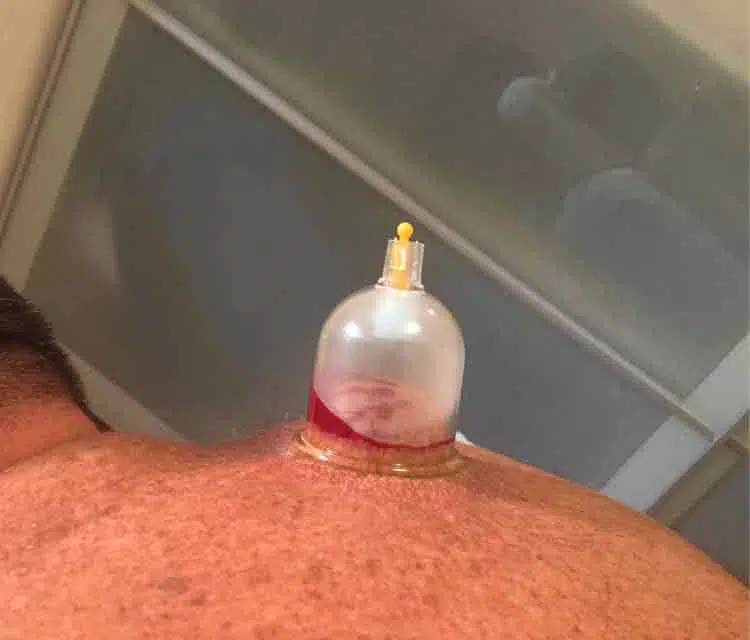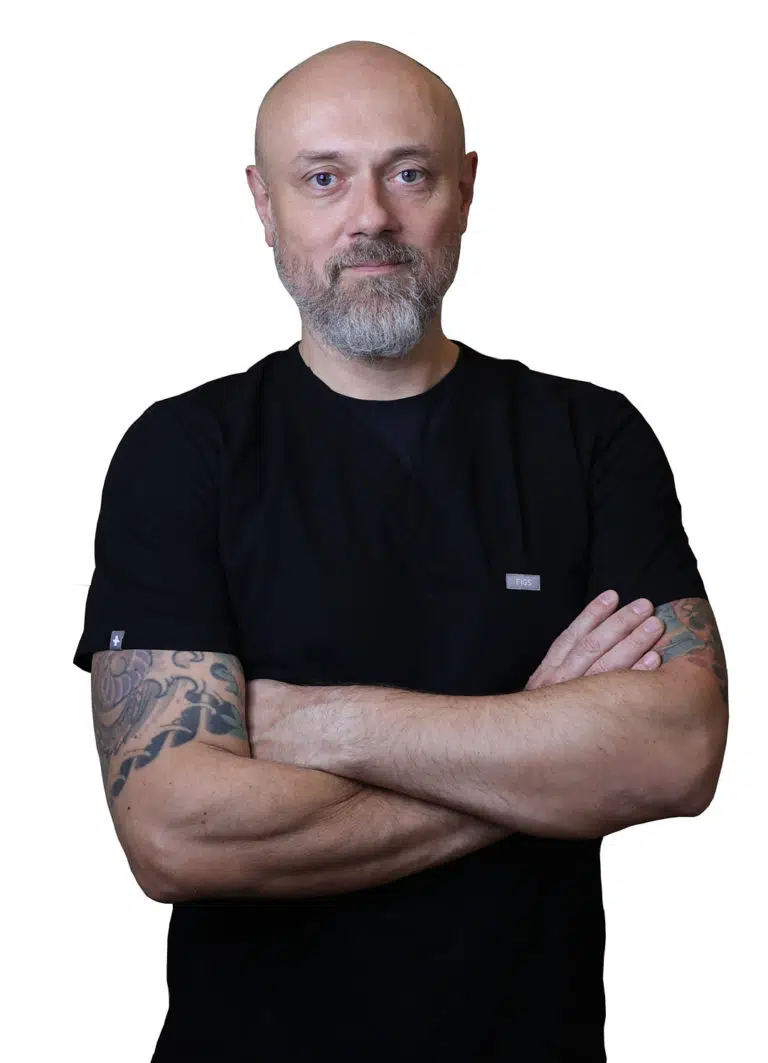Looking for a top acupuncturist in New York City, look no further than Acupuncture NYC. With over 24 years of experience and a commitment to personalized care plans, we are considered by many clients as the best acupuncture practice in NYC. We provide practical, free of side-effects solutions for pain management. We offer personalized acupuncture treatments and herbal consultations for patients with acute and chronic painful conditions.

The fact that acupuncture is an effective therapy for treating chronic pain due to osteoarthritis is undeniable, and we have plenty of scientific evidence to prove this. [1] [2] [3] [4]. Acupuncture is one of the treatments recommended for knee pain from osteoarthritis in national guidelines for physicians. Besides osteoarthritis, our own clinical experience leads us to believe that acupuncture is helpful in other painful disorders of the knee.
There are many anatomical structures inside the knee joint that can be inflamed, misaligned, or torn. Clinically, it is not always very clear in the beginning how far we have to go to alleviate it. In most cases, in our opinion, a good place to start with knee pain treatment is a conservative approach, such as acupuncture, perhaps in conjunction with osteopathic manipulations. Below is a brief list of knee conditions we commonly treat in our clinic.
Osteoarthritis and rheumatoid arthritis are two prevalent types of arthritic disorder. Osteoarthritis of the knee develops with age. Certain metabolic diseases, such as excessive growth hormone and iron overload, increase the risk of developing arthritis earlier. Rheumatoid arthritis is an autoimmune disorder. The immune system attacks the body’s tissues, causing joint swelling and bone deformation. The positive effect of acupuncture on knee osteoarthritis is probably the best documented Western medical literature research.
Ligaments are durable bands of tissue that connect the bones in your body. There are four ligaments in the knee: Anterior cruciate ligament (ACL), Posterior cruciate ligament (PCL), Lateral collateral ligament (LCL), Medial collateral ligament (MCL). Ligaments are prone to strain and tear, especially as a result of intense sports activity. An injured ligament produces sudden and often severe pain. Your knee may swell up within the first 24 hours after the injury, and afterward, you may feel looseness in the joint and inability to put weight on the injured leg without pain. In some cases, when the ligament tears completely, you may need surgery, but in most cases yo so that your knee will be stable and won’t give out when you twist or pivot. A mild to moderate knee ligament injury require conservative treatment. T Acupuncture and herbal medicine can significantly increase your rate of recovery.
Meniscal tear is one of the most common knee injuries. Each knee has two horse-shoe pieces of cartilage called menisci. Any activity that causes forceful knee twist or rotation, especially when putting full weight on it, can lead to a meniscal tear. A torn meniscus can cause pain, especially when you put pressure on the injured knee. You may also have trouble extending your knee fully because of sharp pain. Conservative treatment is enough for most people, especially if they are not competing athletes. A torn meniscus will never grow back, but with appropriate exercises or osteopathic manipulations, it is possible to return a torn piece of the meniscus to its original place. Acupuncture and herbal medicine are very effective modalities to treat pain and inflammation in the knee then.
Knee bursitis is inflammation of a fluid-filled sac (bursa) situated inside your knee joint. Bursae reduce friction and cushion forces on the knee joint when you walk, run, squat. Repetitive stress may cause inflammation of the bursa, which leads to pain, limited range of motion, and swelling.
Patellofemoral pain syndrome manifests as pain at the front of your knee, around your kneecap (patella). Commonly people also call it runner’s knee. This syndrome is a common occurrence in athletes that do a lot of running and jumping. The pain typically increases when you run or walk up or down the stairs, squat, or sit down.
Chondromalacia patella is deterioration and softening of the cartilage underneath the patella. This condition commonly develops in athletes but can also be due to knee arthritis. The cause of chondromalacia is poor body alignment and overuse. It causes pain and a grinding sensation in the knee cap region. Acupuncture and herbal medicine provide very effective solutions to treat this type of knee pain.
Patellar tendinitis, also known as jumper’s knee, commonly occurs in athletes who do a lot of jumping. However, this syndrome may also develop in people who are not athletes too. When the patellar tendon becomes strained and inflamed, pain can occur.
This disease causes pain and swelling on the shinbone. Typically Osgood-Schlatter disease occurs in children ages 10 to 14. It usually occurs in children who participate in sports. In many instances, the condition usually may resolve on its own once the child’s bones stop growing. Still, acupuncture and herbal medicine can help children whose athletic performance and quality of life suffer from this disease.
Iliotibial band syndrome (ITBS) is inflammation and strain of the IT (iliotibial) band, a thick tendon that connects the hip with the top of the shinbone. IT band syndrome presents with a nagging pain on the outer part of your knee. Athletes are especially prone to developing this condition. Your iliotibial band (IT band) can be strained due to repetitive stress from running, biking, or even walking. Irritation of the IT band can lead to pain and swelling of the lateral side of your knee. IT band syndrome usually gets better with time and acupuncture treatment.

Many acupuncture points treat knee joint pain. For example, Nei Guan P-6 is an acupoint located on the Arm Jue Yin channel. It is effective for treating the pain in the front of the knee. We can explain this because the Arm Jue Yin Pericardium channel connects with the Leg Yang Ming Stomach channel, which is closely related to the knee joint. Lv-3 is another essential point for knee joint pain. This point is located on the Leg Jue Yin channel. Numerous classical acupuncture texts mention Tai Chong Lv-3 as a principal point to treat knee pain. If the knee joint pain is due to a bone spur, a combination of St-37 and St-39 tender points on the opposite side produces outstanding results. Our favorite treatment of knee pain is wet cupping on the scapular region. The effectiveness of this technique is unmatched.
We produce herbal soaks of outstanding quality! Some of the jars with herbs are soaking in alcohol for ten years and more. We have special soaks for trauma, acute and chronic pain, rheumatoid, and osteoarthritis.
When it comes to acute or chronic knee pain, you can rest assured we can find the source of your problem and quickly resolve the issue. If you are recovering after surgery, we can significantly cut your recovery time. Our clientele ranges from professional athletes who need recovery after injury for athletic performance purposes to seniors with arthritis, which has rendered traditional medicine ineffective. No matter what type of Knee pain you may have, Acupuncture NYC will create a unique treatment plan for your specific needs.
Acupuncture NYC clinic is conveniently located in Midtown Manhattan, in 10016 zip code. Please get in touch with us if you want to schedule an appointment.

By Gassan&Edmunt – Copyright © Acupuncture NYC 2021